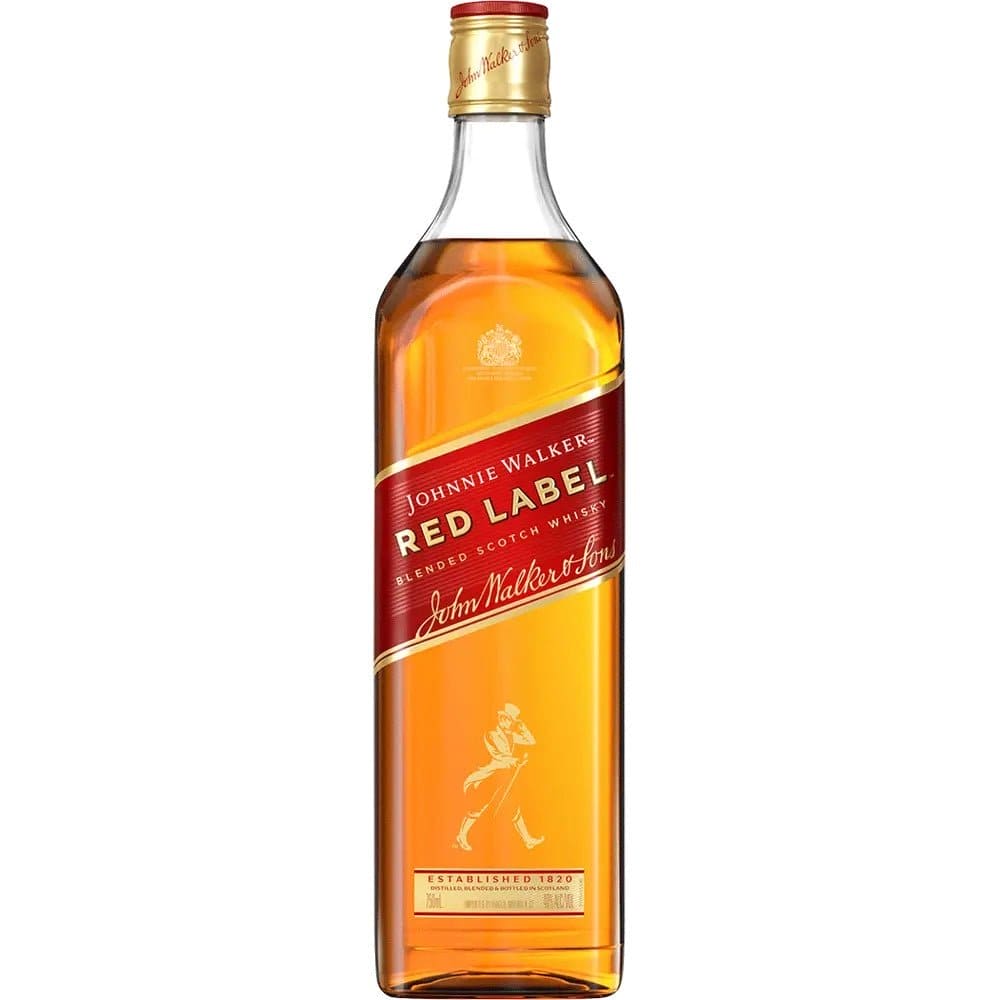
Johnnie Walker Red Label Blended Scotch Whiskey
Experience the Boldness of Johnnie Walker Red Label
Renowned globally, Johnnie Walker Red Label Blended Scotch Whiskey is celebrated for its distinctive and bold flavor profile, making it the world’s best-selling Scotch whisky. Crafted with a unique blend of light and dark whiskies from Scotland, it delivers an unforgettable tasting experience.
Unique Flavor Profile
Johnnie Walker Red Label is characterized by:
- Intense Flavors: A robust combination of spicy, zingy, and edgy notes that dance on the palate.
- Versatile Enjoyment: Perfect for sipping neat, on the rocks, or as a base for your favorite mixed drinks.
- Distinctive Blend: A harmonious mixture of light whiskies from Scotland’s east coast and dark, peaty whiskies from the west.
Perfect for Any Occasion
Originally crafted to excel in mixed drinks, Johnnie Walker Red Label is an exceptional choice for:
- Housewarmings
- Business Functions
- Friendly Gatherings
As whisky expert Dave Broom eloquently puts it, “This is outdoors, this is setting off on your bike along the coast with the wind blowing in your face.”
Elevate Your Experience
Whether you're celebrating a special occasion or enjoying a casual evening with friends, Johnnie Walker Red Label promises to deliver a remarkable and memorable experience. Embrace the boldness and versatility of this iconic Scotch whisky.

Explore a World of Spirits and Liquor through our Comprehensive FAQ Section.
Discover a World of Spirits and Liquor in our Helpful FAQ Section.
Types of Spirits
- Whiskey: Made from fermented grain mash and aged in wooden casks.
- Vodka: Typically distilled from grains or potatoes and known for its clear, neutral flavor.
- Rum: Produced from sugarcane byproducts like molasses or sugarcane juice.
- Tequila: Made from the blue agave plant, primarily in the area surrounding Tequila, Mexico.
- Gin: Distilled with botanicals, primarily juniper berries, giving it a distinctive flavor.
Production Process
- Fermentation: The process where yeast converts sugars into alcohol.
- Distillation: Separating alcohol from the fermented mixture to increase its concentration.
- Aging: Storing spirits in barrels to develop flavors over time.
Tasting and Pairing
- Tasting Notes: Learn to identify different aromas, flavors, and textures.
- Food Pairings: Discover which spirits complement various dishes, enhancing the dining experience.
Cocktails and Mixology
- Classic Cocktails: Recipes and techniques for making popular drinks like the Old Fashioned, Martini, and Mojito.
- Mixology Tips: How to balance flavors and create your own cocktail recipes.
History and Culture
Origins: The historical background of different spirits.
Cultural Significance: How spirits are enjoyed and celebrated around the world.

